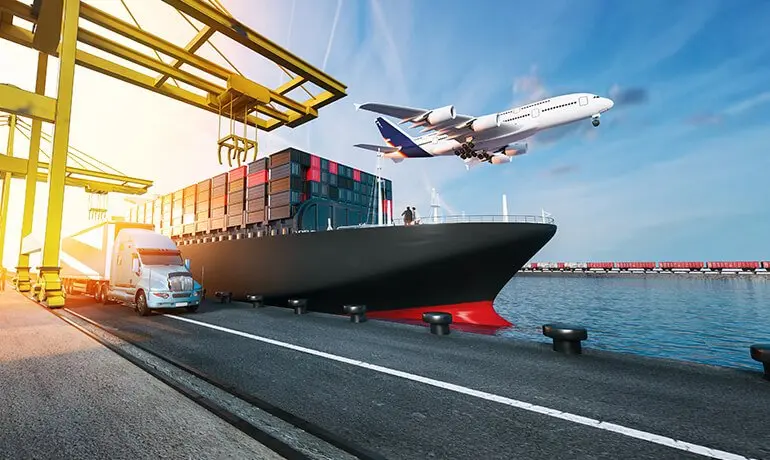What Factors Influence the Cost of Ocean Freight?
The cost of ocean freight shipping is influenced by a multitude of factors, each interconnected and vital to the financial aspects of shipping. Ocean freight companies, providing a wide range of services, navigate through these cost determinants to offer competitive pricing for various types of ocean freight. The efficiency of ocean freight operations, including the meticulous process of ocean freight tracking and logistics, directly ties into the cost, where improved efficiency often leads to lower expenses. Port fees and surcharges are another major factor, varying widely across global ports and affecting the bottom line of ocean freight services.
Let’s delve deeper into each of the factors that influence the cost of ocean freight:
1. Fuel Prices
The cost of bunker fuel, the primary fuel for ships, is a significant component of ocean freight costs. Fluctuations in oil prices directly impact bunker fuel costs, making fuel prices a volatile and unpredictable factor. When oil prices surge, carriers often impose fuel surcharges to offset the increased operational costs, directly affecting freight rates.
2. Port Fees
Ports charge various fees for the services they provide, including but not limited to docking, handling, and storage. These fees can vary widely from one port to another based on the port’s infrastructure, efficiency, and geographical location. Congested ports or those investing in modern facilities may charge higher fees, contributing to elevated ocean freight costs.
3. Surcharges
Ocean carriers levy several surcharges that can significantly impact the overall cost of shipping. These may include:
- Bunker Adjustment Factor (BAF): Adjusts for fluctuations in fuel prices.
- Currency Adjustment Factor (CAF): Compensates for exchange rate risks.
- Emergency Risk Surcharge: Covers unforeseen risks like piracy or war.
- Peak Season Surcharge: Imposed during times of high demand to manage capacity constraints.
Understanding these surcharges and their current levels is crucial for businesses to anticipate and manage their shipping costs effectively.
4. Currency Exchange Rates
The global nature of ocean freight means that transactions often involve multiple currencies. Fluctuations in exchange rates can affect the cost competitiveness of shipping routes and the overall expenses involved in the transportation of goods. Carriers might adjust their rates to reflect changes in currency values, impacting the cost for shippers.
5. Demand and Supply Dynamics
The fundamental economics of demand and supply play a critical role in shaping ocean freight rates. During peak shipping seasons or when there’s a surge in demand for shipping capacity (e.g., pre-holiday seasons, global events), rates tend to rise. Conversely, in periods of low demand or overcapacity, rates may fall as carriers seek to fill unused space on their vessels.
6. Environmental Regulations
Increasingly stringent environmental regulations are pushing carriers towards using cleaner, but often more expensive, fuels or technologies. Compliance with regulations such as those set by the International Maritime Organization (IMO) to reduce sulphur emissions adds to operational costs, which can be passed on to shippers in the form of higher freight rates. The EU ETS, by incentivizing reductions in carbon emissions through financial mechanisms, directly affects ocean freight carriers, leading to increased operational costs as they invest in cleaner technologies and fuels.
7. Geopolitical and Economic Factors
Global geopolitical events, trade policies, and economic sanctions can also influence ocean freight costs. Tensions in key maritime regions can lead to rerouted shipping lanes, longer transit times, and increased security measures, all of which contribute to higher costs.
8. Insurance
Insurance coverage for cargo is an indispensable aspect of ocean freight, designed to protect shippers against potential losses or damage during transit. The cost of insurance varies with the nature and value of the goods shipped, representing a tailored expense based on risk assessment.
9. Container Handling and Haulage
The logistics of moving containers to and from ports, and loading them onto vessels, constitute a significant portion of shipping costs. This encompasses the physical handling of containers, as well as the inland transport required to bring cargo to the port and distribute it after sea transit. Efficient container handling and haulage are crucial for minimizing delays and optimizing cost-effectiveness.
10. Carrier Charges
Carriers charge fees for the transportation of goods, encompassing a range of services provided during the shipping process. These include the use of containers, documentation processing, and booking fees. Carrier charges are the foundational costs of ocean freight, reflecting the direct expense of moving goods across the sea.
11. Type and Size of Container
The selection of containers plays a significant role in freight costs. Standard dry containers offer a cost-effective solution for most goods, but specialized cargo requires different container types, such as reefers for perishable items or flat racks for oversized loads. Additionally, the size of the container influences the price, with larger containers generally providing a more economical per-unit shipping cost for bulk goods.
12. Special Handling
Certain goods require special handling due to their hazardous nature or specific transportation needs. This special handling demands additional procedures, equipment, and precautions, leading to increased costs. It’s a necessary investment in safety and compliance, ensuring that all cargo reaches its destination without incident.
Conclusion
The push towards reducing the ecological impact of ocean freight through sustainable practices and ocean freight route optimization comes with its own costs, albeit necessary for environmental stewardship. Emerging technologies in ocean freight promise to streamline operations and potentially reduce costs, yet they require initial investments. Port operations, integral to the efficiency of the shipping process, also play a crucial role in cost management, where delays and inefficiencies can lead to increased charges. Ocean freight trends are leaning towards digitization and automation to enhance operational efficiency, reduce costs, and enhance sustainability.
Ultimately, each of these factors—from the operational efficiencies and technological advancements to environmental considerations and market dynamics—converges on the cost of ocean freight. Companies must navigate these waters carefully, leveraging innovations and strategic planning to manage expenses while ensuring quality ocean freight customer service. This balancing act is critical for maintaining competitive pricing and achieving sustainability goals, underscoring the complex relationship between the operational aspects of ocean freight and its cost structure.







